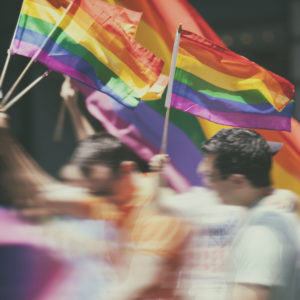The massacre of 49 people at the gay nightclub Pulse was a hate crime of the worst kind, targeting a community that has long stood against hate in its struggling journey toward acceptance.
I recall my college years in the 1980s, when openly gay friends told everyone about their sexual orientation — except their parents. Many avoided this conversation for extended periods, fearing rejection. They agonized over what their parents would say or do. Their anxiety turned into depression. This was during the height of the AIDS crisis. Our college was near San Francisco. We watched as the nightly news reported on the thousands of gay men succumbing to this deadly disease.
Mostly I recalled my uncle Bruce, who told me about the trauma of growing up gay in the 1950s. He lived in Tucson, Ariz., and once traveled to a clinic in upstate New York for “conversion therapy” in an attempt to become straight. It failed. This inhumane practice — which can include violent role-play and re-enactment of past abuses — has long since been denounced by medical authorities and therapists.
Fortunately, Bruce decided he liked being gay and was a very happy man after that, in love with his longtime partner. He was a kind man who, with no children of his own, showered his nieces and nephews with affection. I loved being around him.
Each visit was chock-full of activities — no time for TV or sleeping in late. He knew I liked to bake and my health-conscious mother didn’t, so he’d make shopping lists for the ingredients for fattening cookies and pies. Back at his house, I’d stand on a stool and bake away — butter, sugar, flour, vanilla and all.
One year he took my brother and me on a cross-country winter train trip from Los Angeles to Washington, D.C. We stopped in cities along the way (and visited a Ford auto factory in Detroit). He had scored tickets to tour the White House and later we visited Williamsburg, Va., a colonial town glistening with Christmas decorations and with strolling performers in period costumes singing holiday carols. I had my first authentic Christmas dinner with all the trimmings, a rare treat given that we’re a Jewish family.
During one visit with Bruce, when I was 27, he told me he was dying of AIDS, and this visit was probably our last. Apparently everyone in the family knew for years he was HIV-positive except my brother and me. He told the two of us how much he loved us, how happy we had made him, and how he wanted us to know that there was nothing bad about being gay. If I heard others making fun of gays and lesbians, he said, I should walk away and ignore their hurtful comments.
Bruce died a year later. He was only 48. According to the Centers for Disease Control and Prevention in Atlanta, more than 311,000 gay and bisexual men with an AIDS diagnosis have died.
People who are gay or transgender deal with other issues, too.
LGBT youths are four times as likely to try to kill themselves as heterosexual youths, according to the Human Rights Campaign. Almost half of transgender youths have seriously considered suicide, and one in four has attempted suicide. Gay and bisexual adult men were three times as likely to be depressed as heterosexual men.
Nevada-specific transgender data are similarly sobering. But in addition to high suicide rates in the LGBT community, 67 percent of transgender Nevadans reported being intentionally hurt, including being hit, kicked or punched, according to the 2014 state report “Hope Grows for Nevada’s Trans Health.” I’m not sure where the hope is.
The LGBT community often gets left out of discussions about mental health, even though they unfortunately are frequently at the center of it.
For a long time, psychiatrists labeled homosexuality a mental illness. It wasn’t until 1987 that the American Psychiatric Association eliminated any reference to this in its widely used diagnostic handbook.
Since the tragedy of June 12, the TV and print media have repeatedly listed the names of the 49 deceased individuals. They’ve interviewed survivors and heard from surgeons treating the wounded. They continually remind us that this is the worst shooting in modern U.S. history and point to flags flying half-staff around the world. They state that this shooting was yet another committed using a military-style assault weapon, the kind that once was banned but now is perfectly legal to buy.
But it’s not a story about numbers, names, flags or data. This is a story about nearly 50 people who loved and were loved. They were someone’s Uncle Bruce, someone’s child, sibling, fiance or friend whose life got cut short for no reason.
This tragedy reminds us of just how much further there is to go in the LGBT community’s difficult journey toward equality.

